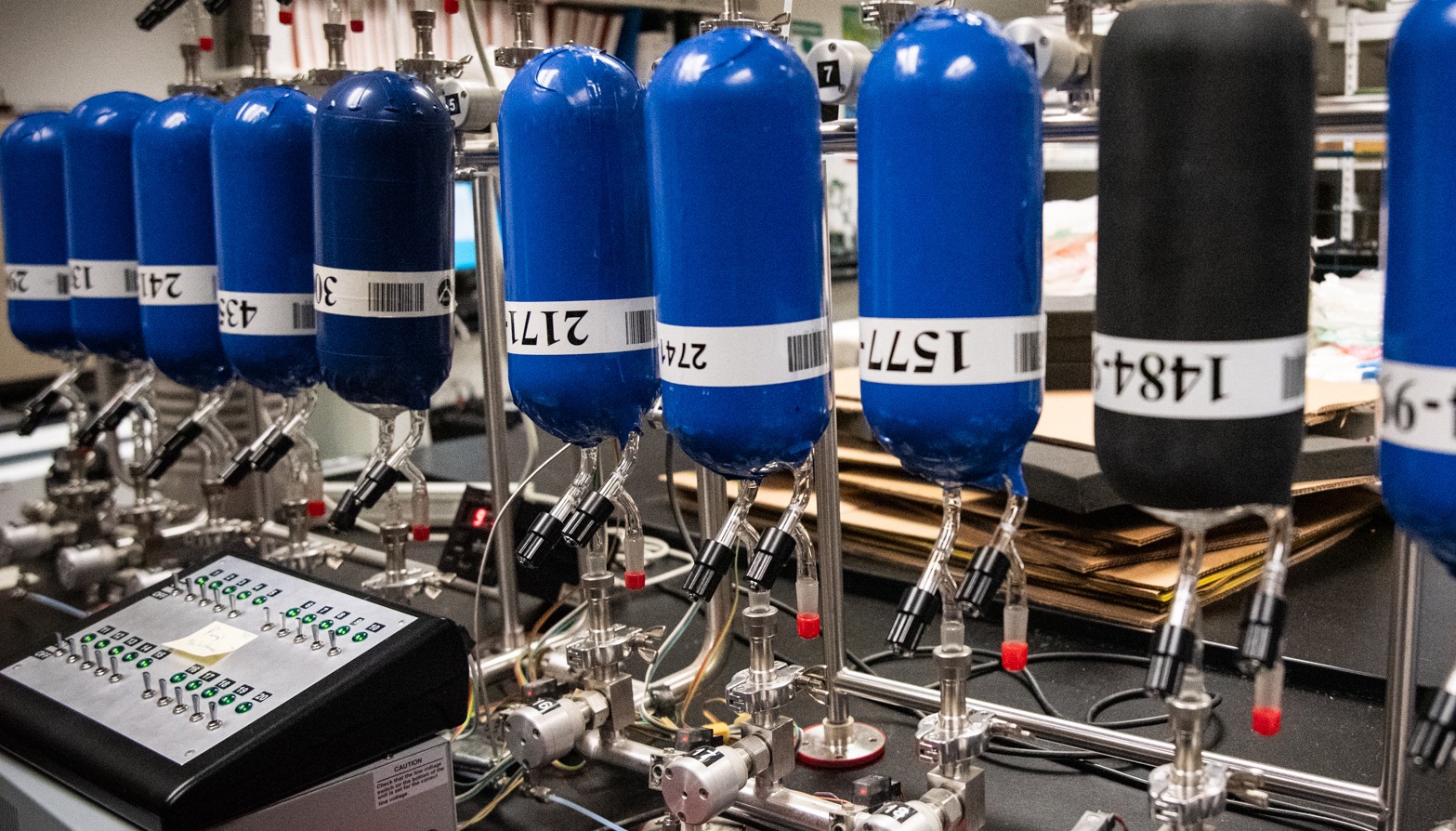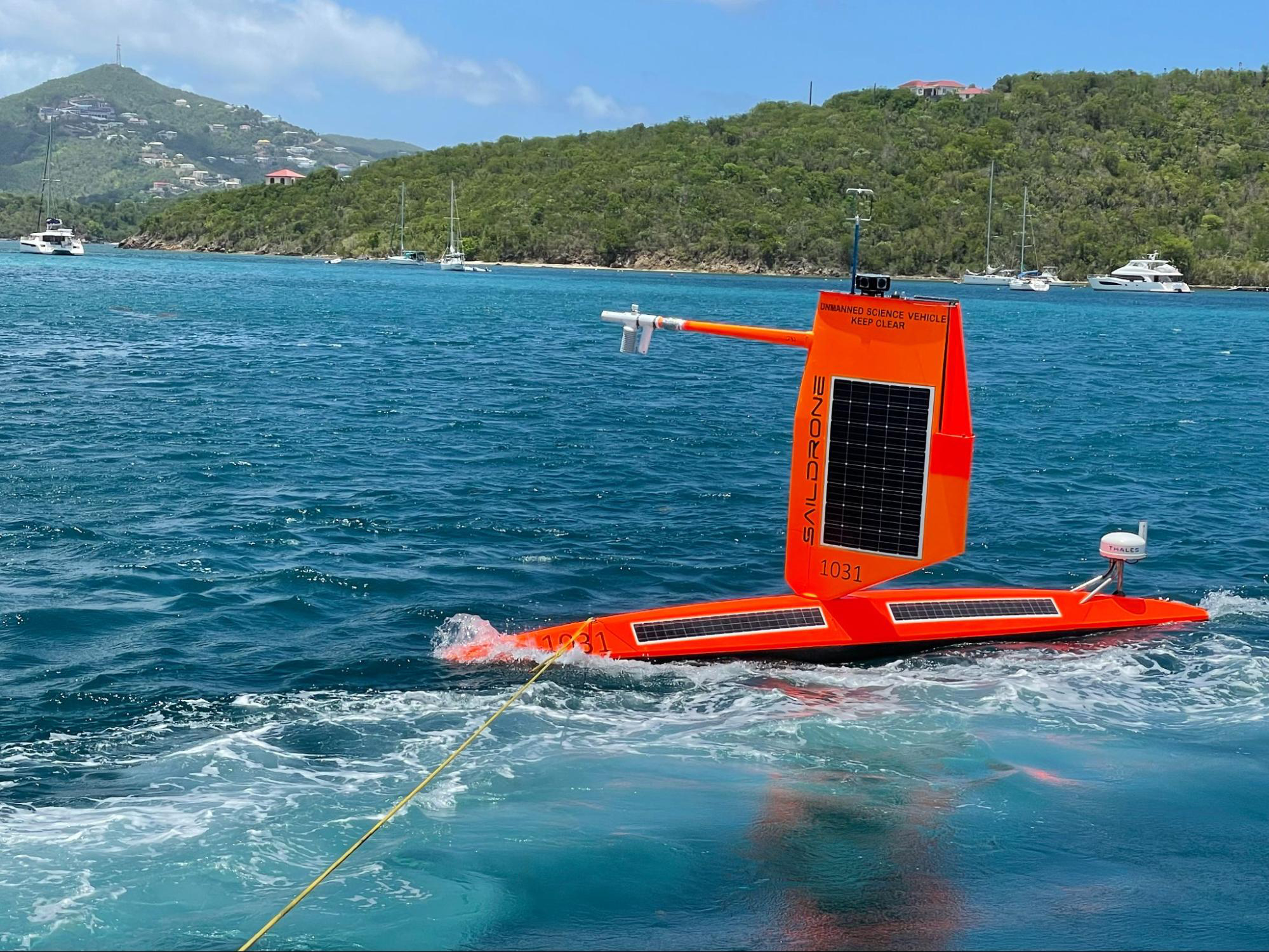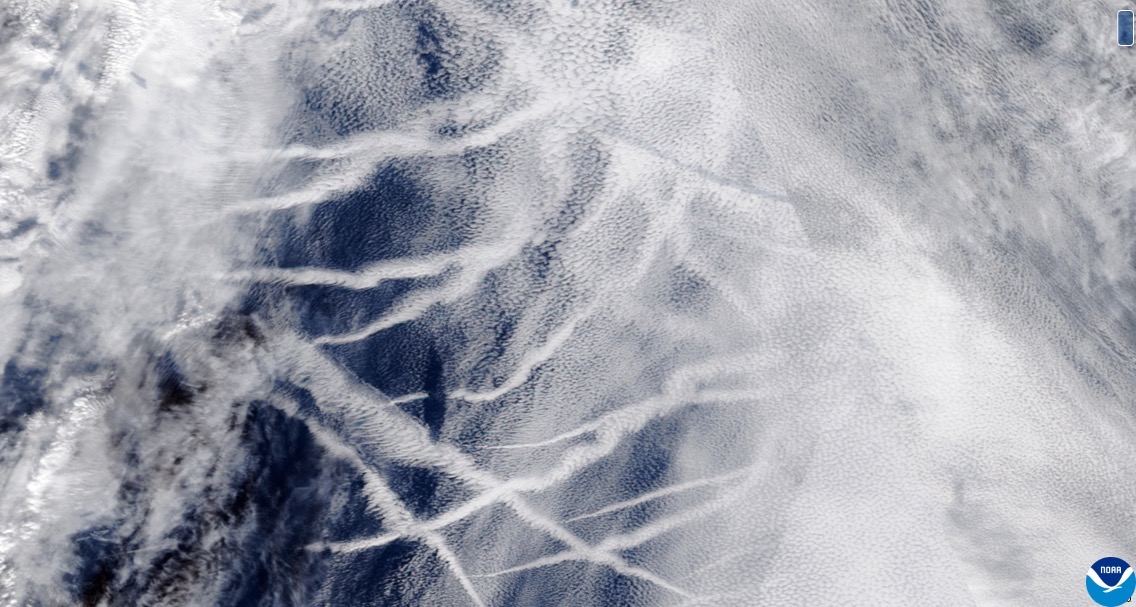Finding has implications for one potential solar geoengineering strategy
Low hanging clouds that hover over large areas of the world’s oceans exert a cooling influence on climate by reflecting solar radiation back to space. Some have suggested that humans could offset the impacts of global warming by artificially seeding these clouds with aerosol particles to brighten them and increase their reflectivity.
To better understand the formation and reflectivity of marine clouds, researchers often study the exhaust plumes of particles from ship smoke stacks which, when they enter clouds, form long, linear cloud tracks across the oceans. Now, new research by scientists from NOAA and CIRES finds that studies that analyze these ship-track clouds may have strongly overestimated the effect of particles on natural clouds, a finding that has implications for a climate intervention strategy known as marine cloud brightening. Their work was published in the journal Science.
“Ship track clouds are a good example of how aerosol effects on clouds are traditionally thought of, and of how they are still represented in most climate models,” said lead author Franziska Glassmeier, a former CIRES scientist now with the Technical University of Delft. The problem, she said, is that these clouds are simply too short-lived to provide a good model for how most marine clouds work.
To reach their conclusions, the researchers used several new tools, including high resolution models covering a very large range of conditions, as well as machine learning approaches. Focusing on the widespread clouds that do not produce precipitation, their research shows that cloud thinning is more efficient when there are more aerosol particles in the cloud and the drops are smaller. “That reduces the amount of water in the cloud and lets more solar radiation pass through, reducing the cloud’s cooling effect,” explains Fabian Hoffmann, former CIRES Visiting Fellow now with the Ludwig-Maximilians-University of Munich.
They found that analysis of ship track-created clouds cannot be generalized to estimate the climate effect of this aerosol-related cloud thinning. In fact, such studies can overestimate their cooling effect by up to 200 percent, the authors said.
‘This reduced cooling effect due to cloud thinning needs to be taken into account for models to correctly simulate the role of stratocumulus clouds in the climate system,” said co-author Graham Feingold, a cloud, aerosol and climate researcher with NOAA’s Chemical Sciences Laboratory. “‘The discovery in this paper is that this cloud thinning increases with time, meaning the cooling effect decreases with time. This is something that had not been considered before.”
The finding has implications for research into marine cloud brightening, a proposed climate engineering technique that would artificially inject aerosols into the atmosphere over the oceans in an effort to make clouds brighter and reflect more incoming sunlight back into space, cooling the water beneath.
“Our results show that even in terms of cloud physics, marine cloud brightening may not be as straight-forward as it may seem,” Glassmeier said. “A poorly planned project could even result in the opposite of what was intended. There is still a lot to learn about how these tiny aerosol particles influence clouds and eventually climate.”
For more information, contact Theo Stein, NOAA Communications, at theo.stein@noaa.gov.



